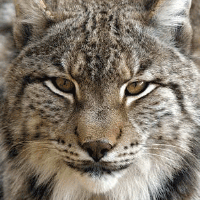BILLINGS, Mont. (AP) — Eastern Montana residents will weigh in this week on a proposed 83-mile coal railroad with the potential to usher in a dramatic expansion of mining in the state and increase exports of the fuel to Asia.
The Surface Transportation Board is hosting a series of public meetings beginning Monday in Lame Deer for its environmental review of the proposed Tongue River Railroad.
The $490 million line from Miles City to south of Ashland would haul up to 20 million tons of fuel annually. That's equal to about half the state's current coal production.
The long-stalled railroad was bought last year by BNSF Railway, Arch Coal Inc. and billionaire Forrest Mars Jr., following decades of delays due to court challenges and financing hurdles.
The project's revival comes at what might seem an unlikely time: The coal industry has seen huge declines in mining in some parts of the U.S. as many utilities drop the fuel in favor of cleaner-burning natural gas.
The railroad also faces concerted opposition from environmental groups and some landowners. They warn the line will industrialize rural areas, and that burning the coal could worsen climate change.
But backers of the Tongue River Railroad said the project could help the local economy, and is well-poised to tap into continued strong demand for the coal in overseas markets such as Asia.
BNSF and other companies want to haul coal from the rich Powder River Basin of Montana and neighboring Wyoming to proposed ports in Oregon, Washington and British Columbia.
A BNSF spokeswoman said in an emailed statement that the railroad and a mine at Otter Creek "could provide a tremendous boost to eastern Montana's economy."
"It will go through a comprehensive environmental review, and the railroad will work with federal and state agencies to ensure stringent environmental standards," wrote BNSF spokeswoman Suann Lundsberg.
Arch is seeking to build a mine at the southern end of the Tongue River Railroad near Ashland, in an area known as Otter Creek.
Economists have projected that the mine and railroad combined could generate almost 2,000 temporary construction jobs and several hundred permanent mining jobs.
Mark Fix, a rancher along the Tongue River and long-time opponent of the railroad, said the huge scale of development could harm streams needed for agriculture and spoil the area's rural character. Fix said a lot has changed since the original proposal in the 1980s for a rail line to carry fuel to power plants in the Midwest.
"It doesn't feel like it's in the public good anymore. It's basically for the good of the Chinese now," he said. "They are expecting the U.S to become a Chinese colony, and we could take all these damages — damages on the coast from the new ports, damages from the railroads all through Montana and damages on our ranches and farms as well."
A second branch of the line potentially could serve other future mines, including on the nearby Northern Cheyenne Reservation, where historic opposition to coal mining has eased in recent years. However, no other mines have yet been proposed.
In an application for the project last month, the railroad relied in part on information from the original proposal for the line from 1983. But the Surface Transportation Board said in a Nov. 1 decision that it wants up-to-date information, including more details on the line's ownership structure.
Additional meetings on the railroad are planned on Tuesday in Forsyth, Wednesday in Ashland, Thursday in Miles City and Friday a second meeting in Miles City.



